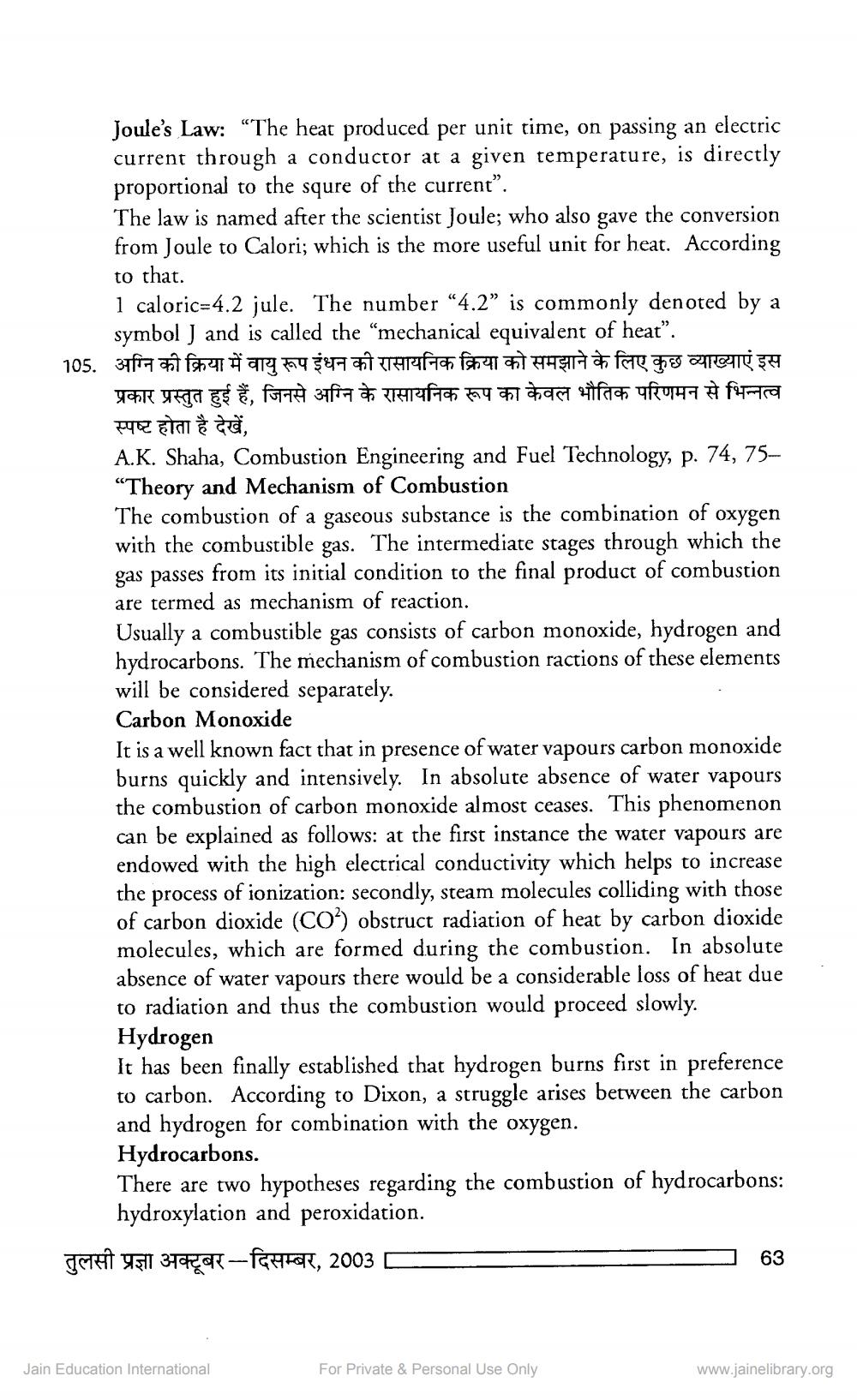________________
Joule's Law: "The heat produced per unit time, on passing an electric current through a conductor at a given temperature, is directly proportional to the squre of the current".
The law is named after the scientist Joule; who also gave the conversion from Joule to Calori; which is the more useful unit for heat. According to that.
1 caloric=4.2 jule. The number "4.2" is commonly denoted by a symbol J and is called the "mechanical equivalent of heat".
105. अग्नि की क्रिया में वायु रूप इंधन की रासायनिक क्रिया को समझाने के लिए कुछ व्याख्याएं इस प्रकार प्रस्तुत हुई हैं, जिनसे अग्नि के रासायनिक रूप का केवल भौतिक परिणमन से भिन्नत्व स्पष्ट होता है देखें,
A.K. Shaha, Combustion Engineering and Fuel Technology, p. 74, 75"Theory and Mechanism of Combustion
The combustion of a gaseous substance is the combination of oxygen with the combustible gas. The intermediate stages through which the gas passes from its initial condition to the final product of combustion are termed as mechanism of reaction.
Usually a combustible gas consists of carbon monoxide, hydrogen and hydrocarbons. The mechanism of combustion ractions of these elements will be considered separately.
Carbon Monoxide
It is a well known fact that in presence of water vapours carbon monoxide burns quickly and intensively. In absolute absence of water vapours the combustion of carbon monoxide almost ceases. This phenomenon can be explained as follows: at the first instance the water vapours are endowed with the high electrical conductivity which helps to increase the process of ionization: secondly, steam molecules colliding with those of carbon dioxide (CO2) obstruct radiation of heat by carbon dioxide molecules, which are formed during the combustion. In absolute absence of water vapours there would be a considerable loss of heat due to radiation and thus the combustion would proceed slowly. Hydrogen
It has been finally established that hydrogen burns first in preference to carbon. According to Dixon, a struggle arises between the carbon and hydrogen for combination with the oxygen.
Hydrocarbons.
There are two hypotheses regarding the combustion of hydrocarbons: hydroxylation and peroxidation.
तुलसी प्रज्ञा अक्टूबर-दिसम्बर, 2003
Jain Education International
For Private & Personal Use Only
63
www.jainelibrary.org




